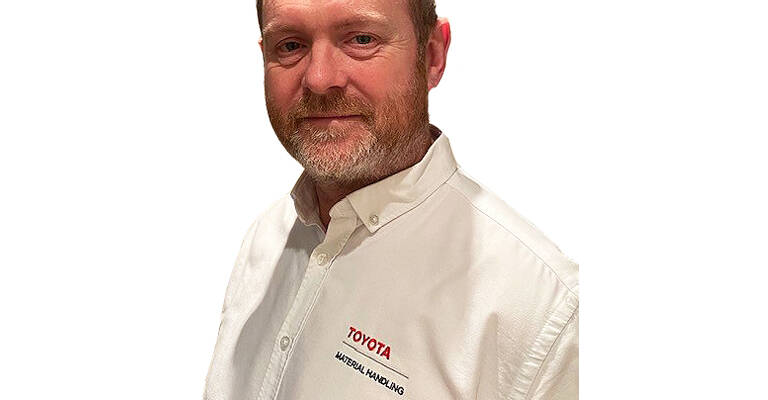System of Active Stability, SAS – more than 20 years of protecting the driver, the load and the truck

One of Toyota Material Handling UK’s most knowledgeable people with regards to the features of Toyota’s SAS is Sam Gray, Sales Training and Product Development Manager (pictured). With Kaizen (Japanese for continuous improvement) a key value of Toyota, part of Sam’s role is to canvas feedback and opinion from customers on areas for improvement and development.
“When it comes to customer feedback, SAS has required little change over the years due to its high level of quality and innovation. It is very often at the top of customer’s lists in terms of what is working well and so with its significant safety benefits, SAS often proves to be a key factor in a customer’s decision to use Toyota.” Explains Sam.
“Stability, confidence and safety are all important aspects when handling goods. While operating a Toyota counterbalanced forklift truck, all driving and stacking actions feel stable and controlled as the SAS system acts before an unsafe operation occurs.
“By actively monitoring key parameters of the truck’s performance, the risk of possible accidents is reduced, and the amount of pallet movements is maximised. This allows operators to work with full confidence, keeping productivity high throughout a working day.”
Sam is going to outline some of the scenarios where SAS proves its importance both from a safety and productivity standpoint:
Quicker and safer goods storing/retrieving from racking
“It is essential that the operator handles loads at height stress-free, without causing any damage to the property or load. This will result in more pallet movements and lower operational costs. The SAS Mast Control function not only monitors the load height and mast position, but also defines the optimised mast speed and angle for these parameters. Hereby mast sway will be minimised, allowing operators to store or retrieve pallets at height faster.”
More confident and efficient stacking or (un)loading of lorries
“Adjusting the forks into a horizontal position to pick up a pallet takes time. With SAS Fork Levelling Control, the forks are levelled at the push of a button, making this task quicker for the driver, for more efficient and productive load handling, especially at heights. In addition, fork levelling helps the operator to stack goods correctly and evenly, avoiding damage to goods and racking, reducing costs.”
Ensuring stability when taking curves
“When cornering without adjusting drive speed, there is an increased accident risk. Acting even faster than the most experienced driver, SAS helps to protect operators when taking a turn without compromising on productivity. The 4-wheel Traigo and Tonero models have the patented SAS Swing Lock Cylinder that gives unmatched lateral stability when cornering by automatically locking the rear axle swing movement. On the 3-wheel Traigo range, SAS optimises the driving speed when taking curves. This way, the truck stability always remains under control.”
More comfort during long-distance transport
“Reducing physical strain on drivers by offering them a comfortable driving position will positively affect productivity and health. The SAS Steering Synchroniser automatically aligns the steering wheel knob with the position of the rear wheels. This alignment helps your drivers to have a more ergonomic driving position and manoeuvre the truck in the most efficient way for safe, productive operations.”
